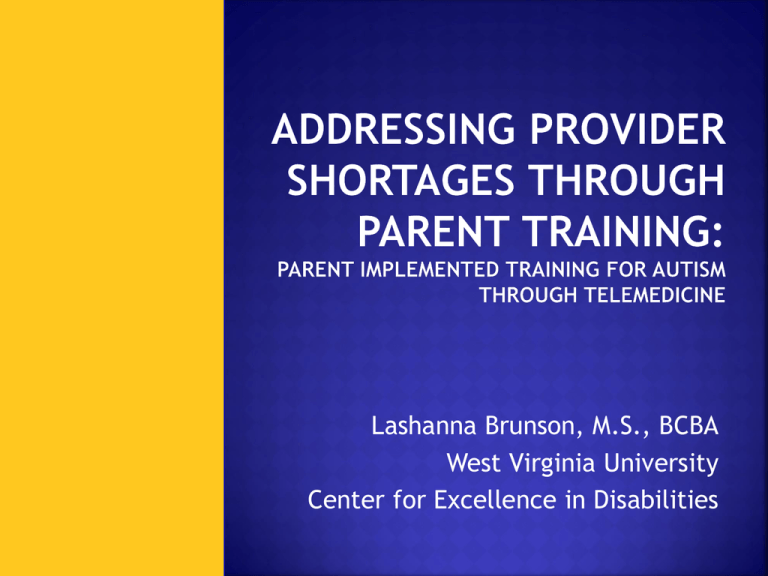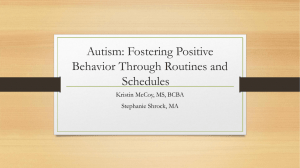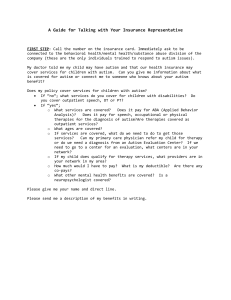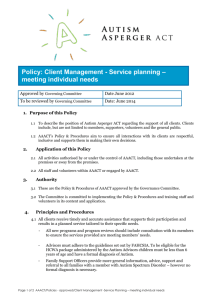Lashanna Brunson, MS, BCBA
advertisement

Lashanna Brunson, M.S., BCBA West Virginia University Center for Excellence in Disabilities Purpose of PITA-T • Provide access to Applied Behavior Analysis (ABA) therapy to families of children with Autism Spectrum Disorders in rural Appalachia ABA and Autism Evidence based best practice Structured learning environment Break large skills into small components Individualized programming based on needs • Data-based decision making • • • • 27 Board Certified Behavior Analysts 1 15 1 4 2 2 2 12 Potential Practitioners 1 14 1 1 4 2 2 2 Barriers to Service Delivery • Technological Barriers • Less computer access in rural areas • Relatively poor internet connectivity • 45% of West Virginians use internet connections with speeds below federal minimum broadband standards (Speed Matters Report, 2010) Barriers to Service Delivery • Economic Barriers • 17.5% of WV residents live in poverty • Extremely expensive Overcoming Barriers • Teach parents to implement discrete trial training (DTT) techniques • Behavior analysts can reach a larger geographical area • Use asynchronous telecommunication to provide instructions and feedback • Eliminates need for high-speed internet Our Families • Children under 5 years old with an Autism Spectrum Disorder • Live in: • • • • • • West Virginia Kentucky Pennsylvania Ohio Virginia Maryland The Process • Phone screening • Intake • Assessments • Materials • • • • Video camera Tripod Memory cards Postage paid envelopes The Process • Mail training materials • Parents record sessions and mail to staff • Staff review sessions and mail feedback • Exit assessments Challenges to Implementation • Many children not diagnosed early • Expand eligibility age • Share autism fact sheet • Parental adherence to taping procedure • Create weekly schedule • Reminder phone calls • Monthly drawing Preliminary Findings • Parents learning to implement DTT • Feedback is necessary • Potential for child improvements not enough to maintain treatment efforts • Greater adherence when video instructions and feedback were provided THANK YOU! This study is supported by grant R40MC20444 from the Maternal and Child Health Bureau (Combating Autism Act of 2006), Health Resources and Services Administration, Department of Health and Human Services Collaboration between Center for Excellence in Disabilities & WVU Department of Psychology











